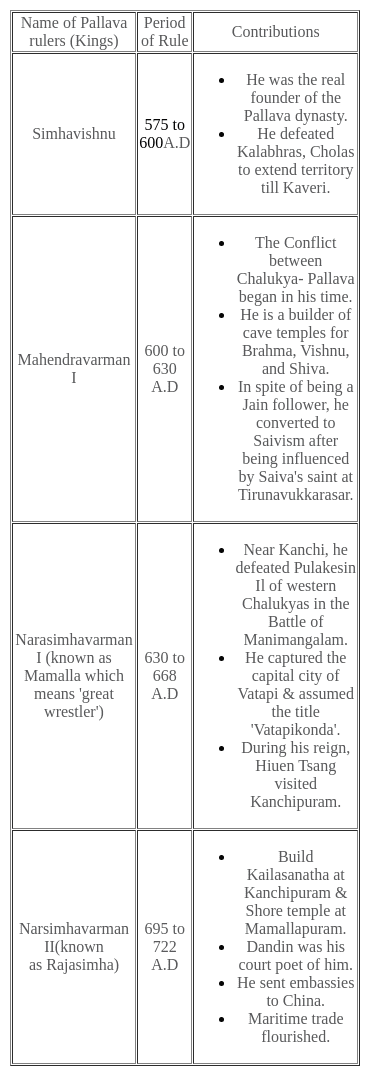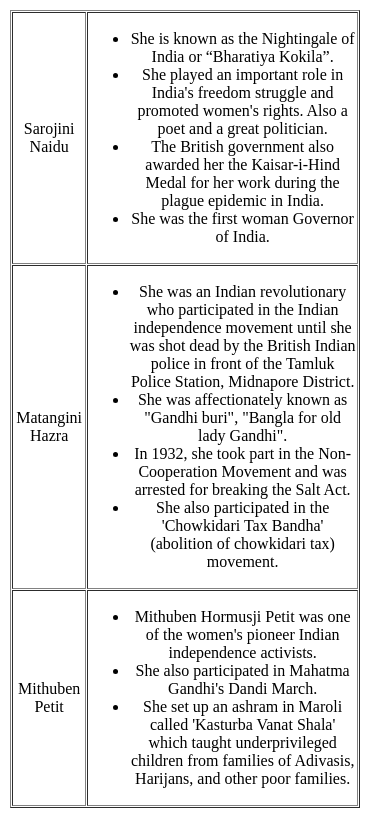MH SET Paper 2 Mock Test - 7 (History) - MAHA TET MCQ
30 Questions MCQ Test MH SET Mock Test Series 2025 - MH SET Paper 2 Mock Test - 7 (History)
From the decline of Guptas until the rise of Harshavardhana in the early seventh century, which of the following rulers were holding power in Northern India?
1. Mahasena Gupta of Magadha
2. Siyaka of Paramaras
3. Prabhakarvardhana of Pushyabhutis
4. Grihavarman of Maukharis
5. Bhillama V of Yadavas
6. Dhruvasena II of Maitrakas
Select the correct answer using the codes given below.
2. Siyaka of Paramaras
3. Prabhakarvardhana of Pushyabhutis
4. Grihavarman of Maukharis
5. Bhillama V of Yadavas
6. Dhruvasena II of Maitrakas
Consider the following statements with respect to the Chandragupta Vikramaditya:
1. He consolidated his position through a matrimonial alliance with the Vakataka dynasty.
2. An iron pillar inscription at Mehrauli in Delhi indicates that his empire included even north-western India and Bengal.
3. He was succeeded by his son Skandagupta.
Which of the statements given above are correct?
Consider the following statements regarding the Gupta age:
1. Law-abiding people.
2. Equality was well established in society.
3. Non-veg food was allowed.
Which of the above descriptions were not mentioned in Fa-Hien’s account?
Consider the statements (A) and (B) about 'Provincial Autonomy' and choose the correct option.
(A) The government announced elections to the Provincial legislatures in 1937.
(B) After Incoming results, the congress formed governments in 7 out of 11 Provinces.
Extensive burning of the forest marks which of the following era?
In regard of token currency issued by Sultan Muhammad Tughlaq, which of the following statements are correct?
(A) According to Barani, the metal used for the token coins was copper
(B) Ferishta says it was brass or bronze
(C) While other coins had only Arabic super inscriptions, the token coin had its legends in Persian also
(D) No care was taken to make the legend on the token coins clear and legible
Choose the correct answer from the options give below:
Consider the following statements & Identify the Newspaper.
1. It was the first Persian Newspaper of India.
2. It had to cease publication after the imposition of Licensing Regulations, 1823.
Some events of the Indian National Movement are given below:
P: August offer
Q: Wavell Plan
R: Cripps Mission
S: Poona Pact
Arrange them chronologically by the year of their occurrence.
With reference to the Mughal architecture Pietra dura (inlaid mosaic work), consider the following statements:
- It was introduced for the first time under Shah Jahan.
- It was used in Itamad-ud-Daul’s tomb for the first time.
- It was also the basis for Taj Mahal.
Which of the statements given above is incorrect?
Consider the following statements:
1) The discussions in the Third Round Table Conference eventually led to the passing of the Government of India Act of 1935
2) The Government of India Act of 1935 provided for the establishment of All India Federation to be based on a Union of the provinces of British India and the Princely States
Which of the statements given above is/are correct?
Consider the statements A, B, C about Janapadas and choose the correct answer:
A. The word janapada literally means the land where the jana set its foot, and settled down.
B. Purana Qila in Delhi, Hastinapura near Meerut, and Atranjikhera, near Etah, are examples of Janapada.
C. People of Janapadas lived in huts and kept cattle as well as other animals.
Which of the following statements are correct regarding the Bhoodan movement?
I. The movement was independent of the government.
II. The movement had support from the Congress party.
III. It was led by Jayaprakash Narayan
Consider the following dynasties:
1. Pallavas of Kanchipuram
2. Imperial Cholas
3. Chalukyas of Badami
From the decline of Guptas until the rise of Harshavardhana in the early seventh century, how many of the kingdoms given above were holding power in Southern India?
B.R. Ambedkar played a pivotal role in shaping the Indian Constitution. Among the following statements regarding his contributions and the features of the Constitution, which are CORRECT?
(a) Ambedkar championed a socialist economic system and advocated incorporating it directly into the Constitution.
(b) The Constitution incorporates a federal system with a strong central government to ensure national unity.
(c) Ambedkar, though the Chairman of the Drafting Committee, faced significant opposition to his ideas during the Constituent Assembly debates.
(d) The Constitution enshrines Fundamental Rights as justiciable rights, enforceable by the courts.
Which among the following in not true regarding the grievances of the sepoys in East India Company's Army?
Upto which rank or level an Indian could have reached in East India Company's army?
Consider the following statements regarding Paika Rebellion.
1. Paikas were the traditional land-owning militia of Odisha and served as warriors.
2. Paikas rebelled back when armies of the East India Company overran most of Odisha in 1803, the Raja of Khurda lost his primacy and the power and prestige of the Paikas went on a decline.
3. The commission set up by the British recommended that the hereditary rent-free lands granted to the Paikas be taken over by the British administration and this recommendation was zealously adhered to.
Which of the statements given above is/are correct?
Arrange the following Buddhist sects in chronological order:
(i) Hinayanists and Mahayanists
(ii) Sthaviravadins and Mahasanghikas
(iii) Vajrayanists
(iv) Sarvastivadins
Select the answer from the codes given below:
Which of the following statements about Ellora caves is correct?
- They were initially built by Saatavahanas.
- These caves belong to 6th to 10th century A.D.
- Unlike Ajanta caves, these caves are dedicated to only one religion, i.e., Buddhism.
Select the correct answer using the codes given below:
Consider the following statements about the Pandyan Kingdom:
1. The first time it was mentioned by Fa-Hien.
2. They used to earn profits by trading with the Roman empire.
Which of the above statements is/are correct?Which of the following statement(s) about the India election of 1945 is/are correct?
1. Congress emerged as the largest party by capturing 52 of 109 seats in the Central Assembly.
2. Muslim league captured all the Muslim reserved seats in the Central Assembly.
3. In the provincial elections, the Muslim league got a majority in Bengal, Punjab, and Sindh.
Select the correct code from below:
Consider the following statements.
1. The Mughal emperors patronised the Dhrupad form of music.
2. Mughal miniature paintings give evidence that music was employed in Mughal courts.
Which of the above statements is/are correct?Consider the following statements:
1. The All India Kisan Sabha was founded by Gauri Shankar Mishra and Indra Narayan Dwivedi
2. The Congress Manifesto for the 1937 provincial elections was strongly influenced by the Awadh Kisan Sabha
3. All India Kisan Sabha is also known as ‘Akhil Bhartiya Kisan Sabha.’
Which of the above statements is/are correct?
Mahabalipuram is known for its world heritage site complex of the group of monuments. Consider these statements about it:
- These are the gems constructed at the times of Pallavas.
- Most monuments at Mahabalipuram are rock cut and monolithic.
- Each of the Panch Rathas is carved out of one single large piece of stone in similar style.
Which of the statements given above are correct?
|
60 tests
|


















